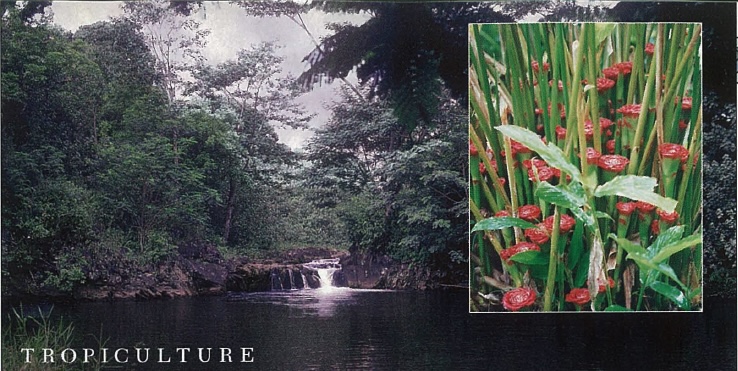It is traditional for Hindu temples to cultivate nearby gardens that provide beauty, medicinal resources, fruits and flowers for daily offerings. But this Hawaiian hideaway exceeds all concepts of the heritage. Over the past 20 years, an evolution took place on a remote 51-acre parcel four miles mauka, away from the sea, transforming it from a wild hau bush wilderness to the lavishly lush San Marga Sanctuary.
All this started with the 1975 vision in which Gurudeva saw Lord Siva blessing pilgrims as they walked along serpentine paths through beautiful groves and gardens. Today that vision is a reality. The grounds of Kauai’s island temple cradle a one-of-a-kind meditation paradise, a refuge of natural beauty for pilgrims from around the globe seeking divine experience. Said one, “It’s so easy here to see God everywhere.”
The gardens, still young, burst with emerging beauty and disclose to explorers a serenity that impels one to sit under a sacred tree by a meandering stream or one of 25 ponds and plunge deep within. Gurudeva has conceived varied environments, each with an individual name and experience: Path of the Nayanar Saints, the Straight Path to God, Rishi Valley, Bali Hai Falls, Pihanakalani Trail, Rudraksha Forest and River Ridge Road, to name a few. Pilgrims encounter scented plumeria, a konrai forest, orchids, edible bamboo, breadfruit, taro, fragrant vines, luscious lilikoi, native species, ferns, bubbling waterfalls, lotus ponds, redwood pavilions and lava rock gardens. Collectors from around the world send exotic plants for the sanctuary, and the monks trade actively to bring in new varieties. Sacred and ayurvedic trees from India and Sri Lanka–bilva, neem, curry leaf, rudraksha, betel and areca nut–thrive here, and the monks have imported unusual specimens like palmyra, sandalwood, durian, mangosteen, jakfruit and amala. Secluded marshes and waterways provide refuge for wild birds. Tropical flowers include 300 species of heliconia and ginger, a delightful treasury of 250 kinds of ti plants, 30 different bananas and 25 pineapples, many palms and a rich selection of bromiliades sent last year from the Bahamas. Little wonder that the ancient Hawaiians, who lived for hundreds of years on this very land, called it Pihanakalani, “where heaven touches Earth.”
